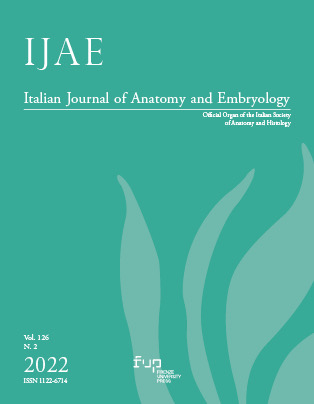Circulating endothelial cells and endothelial-derived vesicles identification in patients with infantile hemangioma: preliminary results of a prospective cohort study
Published 2022-12-27
Keywords
- circulating endothelial cells,
- extracellular vesicles,
- children,
- infantile hemangioma,
- propranolol
How to Cite
Abstract
Circulating Endothelial Cells (CEC) and Circulating Extracellular Vesicles (cEVs) are biological markers of endothelial activity/disfunction and may play a pivotal role in the evolution of IH. Our aims were to detect variations in CEC and cEVs concentration: 1. in IH versus healthy controls; 2. in IH before and after propranolol administration. Twenty-two children (15 cases; 7 controls) from our Department underwent peripheral blood sampling to study CECs, EPCs and EVs via cytofluorimetry. Statistical analyses were performed using XLSTAT ver. 2014.5.03 and GraphPad Prism ver. 8.0. Data were expressed as mean ± standard deviation, median, 5-95th percentile. The number of CEC and HSC was higher among cases than controls, even if not statistically significant. The number of CEC decreased with the evolution of the hemangioma; number of HSC decreased proportionally with the age of the patienst. Number of EVs tended to increase when the CECs decrease and vice-versa in the group of cases but not among controls. Number of CEC and HSC was significantly reduced after oral propranolol administration (p: <0,0001). In conclusion CECs may represent a marker of progression of disease. Propranolol seems to affect the number of CECs and HSCs.
Metrics
No metrics found.


